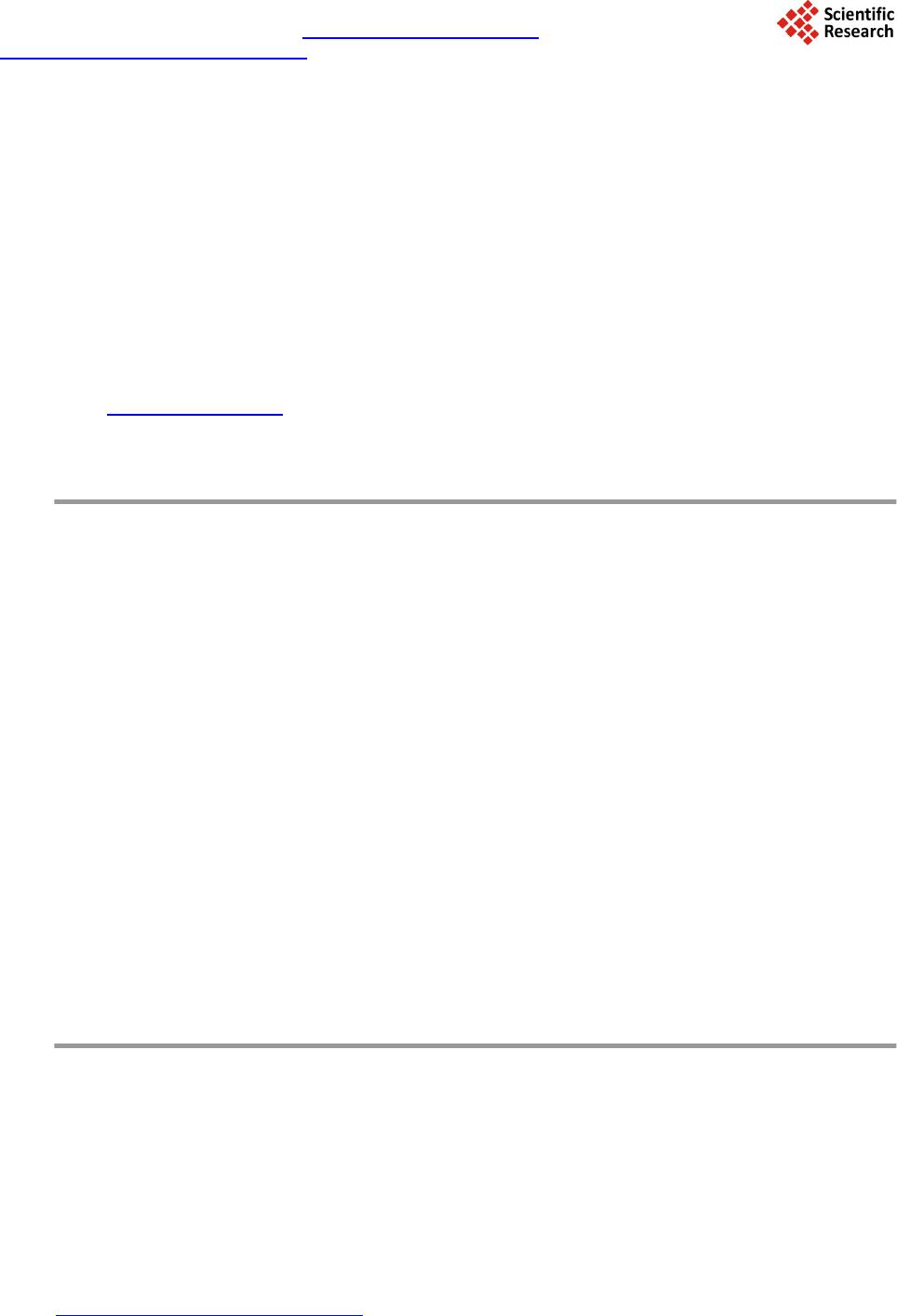 World Journal of Engineering and Technology, 2014, 2, 1-6 Published Online September 2014 in SciRes. http://www.scirp.org/journal/wjet http://dx.doi.org/10.4236/wjet.2014.23B001 How to cite this paper: Au-Yong, C.P., Ali, A.S. and Ahmad, F. (2014) Preventive Maintenance Characteristics towards Op- timal Maintenance Performance: A Case Study of Office Buildings. World Journal of Engineering and Technology, 2, 1-6. http://dx.doi.org/10.4236/wjet.2014.23B001 Preventive Maintenance Characteristics towards Optimal Maintenance Performance: A Case Study of Office Buildings Cheong Peng Au-Yong, Azlan Shah Ali, Faizah Ahmad Faculty of Built Environment, University of Malaya, Kuala Lumpur, Malaysia Email: auyongcp@um.edu.my Received May 2014 Abstract Lack of preventive measure is currently the problem that implicates poor building maintenance performance and issue on sustainability of buildings in Malaysia. Whereby, preventive mainte- nance is an effective approach to enhance the reliability and quality of a system and its compo- nents. This study seeks to investigate the characteristics of preventive maintenance towards the overall performance in building maintenance. Case study approach is adopted to identify the maintenance characteristics and aspects that lead to good performance. The research findings demonstrate that the most significant maintenance characteristics towards overall performance are skill and knowledge of maintenance labour, quality of spare parts and materials, length of predetermined maintenance interval, skill and knowledge of maintenance manager, capability to adopt maintenance equipment and technique, budget allocation for acquisition of maintenance data, reliability of maintenance data, as well as frequency of monitoring and inspection. As a con- clusion, the significant maintenance characteristics must be taken into consideration to achieve optimal maintenance performance. In order to improve the effectiveness of maintenance strategy and the maintenance performance, the study recommends practice and provision of communica- tion platform such as meeting and customer satisfaction survey that involves all the key partici- pants from clients to customers. Keywords Office Building, Maintenance Management, Preventive Maintenance, Maintenance Characteristic, Maintenance Performance 1. Introduction Poor building maintenance is one of the most concerned problems in construction industry. This problem be- comes an obstacle to achieve sustainable building. Thus, maintenance management is seen as an approach to tackle the problem. Horner et al. [1] stated that the objective of maintenance management is to reduce or even avoid the reactive maintenance by proper planning and implementation of maintenance tasks using appropriate materials and tools at the right time. However, in Malaysia, low service quality is the main current issue of  C. P. Au-Yong et al. maint enance mana geme nt [2 ] [3] . The issue is due to the failures in planning of maintenance strategies or tactics caused by several factors such as lack of knowledge about the maintenance strategies, inadequate performance standard, lack of building performance monitoring data, failure to provide appropriate advice on design and planning based on overall performance, and others. As a result, many buildings are found to be unfit in terms of building use and function. Lack of preventive measure is currently the problem that implicates poor maintenance performance. Thus, the research introduces and recommends the implementation of preventive maintenance to tackle the issue. Accord- ing to Moghaddam and Usher [4] and Wang and Christer [5], preventive maintenance involves maintenance tasks such as inspection, monitoring, clean ing, lubr icatio n, a dj ustment, alig nment, rep air, rep lace ment and main- tenance of building’s and systems’ components before failures or system breakdowns occur. Meanwhile, pre- ventive maintenance is based on component reliability characteristics and aimed to reduce the probability of component failure, as well as to minimise the system downtime [1] [6]-[8]. The researchers further explained that the cost of preventive maintenance is definitely less than the cost of failure or corrective maintenance. This is because corrective maintenance arises immediately with unexpected and extensive need of maintenance re- sources [9]. Importance of Preventive Maintenance Rao [10] described that preventive maintenance is an effective approach to enhance the reliability and quality of a system and its components. In order to prevent failure from occurring, preventive maintenance practice should be able to indicate when a maintenance work needs to be p erformed [7]. Eti et al. [11] supported that maximis- ing co mpo nents r eliabili ty and extending the co mponent s’ life a re the mai n purpo se of pre ventive mainte nance . It also pr ovides a critical ser vice function that minimises interruptions to core business of an organisation. Eti et al. [11] pointed out that system failure causes negative impacts to the organisations, users and custom- ers. The negative impacts could be on the aspects of output, safety, environmental integrity, system quality, customer satisfaction, and additional repair cost incurred. Thus, the implementation of preventive maintenance is necessary to replace the need of corrective maintenance [12]. Consequently, unnecessary cost such as emer- gency repair cost after occurrence of failure occurs can be reduced or avoided. The required capital investment on maint e nance can be minimised as well. However, Moghaddam and Usher [4] argued that preventive maintenance involve a basic trade-off between the contradict aims, which are to minimise total maintenance costs and to maximise the o verall reliability of the building and systems. For example, systems or components that are maintained or replaced frequently will re- quir e high maintena nce cost, but the y wil l provide high reliability. So, a balance between the two aims must be revie wed and o bt ained in ord er to ac hieve the ef fecti ve ness of pr event ive maint ena nce. Co nseque ntl y, thi s stud y seeks to investigate the characteristics of preventive maintenance towards the overall performance in building maintenance. 2. Characteristics of Preventive Maintenance Commonly, preventive maintenance is divided into two strategies, which are scheduled maintenance and condi- tion-based maintenance [7] [13]-[15]. It is highl y reco mmended to implement and p rioritise both of the mainte- nance strategies instead of corrective maintenance, to achieve optimal maintenance performance. Through lit- erature review, the characteristics of preventive maintenance are identified as follows [16]: ● Maintenance labour ● Spare parts and materials ● Predetermined maintenance interval ● Failure and maintenance dow ntime ● Maintenance manager ● Maintena nce equipme nt and technique ● Acquisition of mainte nance data ● Monitoring and inspection The characteristics are likely to influence the overall maintenance performance [17] [18 ]. Thus, the y mus t be concerned in the maintenance management. An effective maintenance management always put a lot of effort towards these characteristics.  C. P. Au-Yong et al. The significance of the maintenance characteristics in effective maintenance management is revealed by the researchers [16]. However, the question is whether the characteristics are the significant contributors to the overall maintenance performance or not. Therefore, investigate relationship between the maintenance character- istics and the overall maintenance performance is the main objective of this research. 3. Maintenance Performance Measurement Measurement of maintenance performance is an assessment that helps to identify the strengths and weaknesses of the maintenance activities [19]. In addition, the result of performance measurement indicates the effectiveness of existing maintenance strategy. Basically, the measurement of performance can be obtained through the level of success or failure in ter ms of schedule, cost and functionality [20] [21] . Indeed, customer’s satisfaction survey is one of the most popular performance measuring systems, whether in business, product or service sectors [22] [23]. Thus, the concept is also adopted in maintenance management. Feedback in terms of maintenance time, cost and quality from the building users or customers is taken into con- side rati on in the s urve y to measur e the mai ntenance performance of a building. Consequently, the overall maintenance performance is determined by the users’ and customers’ satisfaction towards the maintenance manage ment in this research. 4. Research Design This research adopted case study approach that was adopted by Myeda et al. [24]. Four high-rise office build- ings located in Kuala Lumpur were selected for the case study. In the previous customer satisfaction survey re- port towards maintenance management, the buildings obtained 80% or above of satisfactory feedback. Thus, they were deemed to have good maintenance performance. Then, st udy about the concern and co mmitment to- wards the maintenance characteristics by the maintenance management, was documented. The aim of the re- search design is to identify the maintenance characteristics and aspects that lead to good performance. Several approaches were used to collect the research data, included focused interview, archived documenta- tion, and observation. Semi-structured interview was conducted to understand the relationship between variables [25]. The interview was targeted to the maintenance managers of the selected buildings. In general, questions about the aspects of the maintenance characteristics that influencing the maintenance performance were asked and discussed with the managers. Then, Nik Mat [26] stated that it is constructive to assess the archived docu- ments and records from respective organisations to get the scenario of maintenance management. So, archive documentation was carried out to record the historical data that were related to the maintenance characteristics and the ir a spect s. Furt her more, obse rvatio n is ve ry hi gh val idit y becau se it invol ves st ud ying the pheno mena o f cases in natural contexts [25]. Thus, it was performed to track the actual scenario of the maintenance manage- ment and performance in the selected buildings. Consequently, all the collected data were combined and dis- cussed accordingly. Combination of the data collected from different approaches could help to increase the reli- ability and validity o f t he findings. 5. Research Result All the aspects of maintenance characteristics were examined thoroughly. Then, the findings of the aspects were tabulated in Table 1. The findings revealed the concern and commitment of the management towards each as- pect of the maintenance characteristics in the selected buildings. From the result, it is summarised that the most significant maintenance characteristics towards overall per- formance are: ● Skill and knowled ge of maint enance la bour ● Quality of spare parts and materials ● Length of predete rmined maintenance interval ● Skill and knowled ge of maint enance manager ● Capabilit y to adopt maintena nce equipment and technique ● Budget allocation for acquisition of maintenance data ● Reliability of maintenance data ● Frequency of monitoring and inspec t ion  C. P. Au-Yong et al. Table 1. Aspects o f maintenance characteristics to achieve optimal p er fo rmance. Aspec t of Maintenanc e Ch aracterist ic Building Percentage ( %) B1 B2 B3 B4 1) Mai n t e nance labour • Amount of sala ry for mai ntenance labou r is satisfactory N Y Y Y 75 • Specific qualification and experience are required upon employment of maintenance labour Y Y Y Y 100 • Standby maintenance labour is provided Y N N Y 50 2) Spare parts and materials • Budget allocated for spare parts acquisition is sufficient Y Y Y N 75 • Prop er stock of spare parts and materials is stored Y Y Y N 75 • Quality of sp are parts and material is guar anteed Y Y Y Y 100 3) P r edet ermined maintenance in terval • Additional budget for routine maintenance is alloc ated (outsourced contractor) N N N Y 25 • Interval of routine maintenance (replacement) is fixed according to priority of systems and components (daily, weekly, monthly, yearly, and etc.) Y Y Y Y 1 00 4) Failure and maintenance downtime • Addi t i o nal budg et to repair damag ed syste m s and com po nents is all o cate d (contingency cost) N N Y Y 50 • Minimal failure an d mainten ance downtime is ach ieved Y Y N N 50 5) Maintenance manager • Amount of sala ry for mai ntenance manager is satisfact ory Y Y N Y 75 • Specific qualification and experience are required upon employment of mainten ance manager Y Y Y Y 100 6) Maintenance equipment and technique • Budget allocated for tools and equip ment acquis ition i s suffici ent N Y Y N 50 • Appr o priate or adv anced maintenance eq u ip ment is available N Y Y N 50 • Mai n tenance t o o ls and technique are fully utili sed Y Y Y Y 100 7) Acquisition of maintenance data • Expenses for documentation and recording of maintenance data are allowed Y Y Y Y 100 • Systems conditi o n is accurately reflected by the ma in tenanc e data and recor d Y Y Y Y 100 8) Monitor i ng and ins pection • Additional budget for monitoring and inspection is allocated (computerised conti nuous monitoring s yst em) N N Y Y 50 • Interval of routine inspection is fixed according to criticality of systems and components (daily, weekly, monthly, yearly, and etc.) Y Y Y Y 100 Taking into cognizance the significant maintenance characteristics, this research recommends the practitio- ners to concern about these characteristics when planning and implementing the maintenance activities. If proper attention is paid to these characteristics, the maintenance performance would most likely be improved. In order to enhance the effectiveness of maintena nce management, contribution and involvements of the key participants, such as the clients, maintenance personnel, and building users in the management is important. Recommendations to improve the effectiveness of management were discussed in the interview sessions. The interviewees suggested that providing communication platform to gather the opinions, comments, needs, and is- sues of the key participants can improve the planning of maintenance strategies accordingly. For example, the communication platform includes meeting and customer satisfaction survey. Therefore, the commitment and participation of the key participants are necessary in effective maintenance management.  C. P. Au-Yong et al. 6. Conclusion This paper describes the background and scenario of building maintenance in Malaysia. Lack of preventive measure is determined as the key issue that implicates poor maintenance performance. In order to tackle the is- sue, preventive maintenance is introduced in this research. The preventive maintenance characteristics are iden- tified through li tera ture rev ie w. T hen, the ap plica tion o f th e maintenance characteristics are investigated through case study. Eight significant characteristics are demonstrated as the key factors that lead to customers’ satisfac- tion. In other words, those characteristics significantly improve the overall maintenance performance. They are skill and knowledge of maintenance labour, quality of spare p arts and materials, length of predetermined main- tenance interval, skill and knowledge of maintenance manager, capability to adopt maintenance equipment and technique, budget allocation for acq uisition of maintenance data, reliability of maintenance d ata, as well as fre- quency of monitoring and inspection. Therefore, this paper recommends the practitioners to concern about these characteristics when planning and implementing the maintenance activities, so that the maintenance perform- ance and customers’ satisfaction can be improved and achieved respectively. Provision of communication plat- for ms such a s meeti ng and c usto mer satis facti on sur vey is s ugges ted to involve a ll the clients, maintena nce per- sonnel, and b uilding us ers in the planning of mai ntenance st rate gy. References [1] Horner, R.M., El-Haram, M.A. and Munns, A. (1997) Building Maintenance Strategy: A New Management Approach. International Journal of Quality in Maintenance, 3, 273-280. [2] Ruslan, N. (2007 ) Campus Faci lities Man agement E xper ience. In National Asset and Facilities Management (NAFAM) Convention, National Asset and Facility Management Development, Kuala Lumpur, Malaysia, 13 August 2007. [3] Kamaruzzaman, S.N. and Zawawi, E.M.A. (2 010) Develo pment o f Facili ties Man agement in Malaysia. Journal of Fa- cilities Management, 8, 75-81. http://dx.doi.org/10.1108/14725961011019094 [4] Moghaddam, K.S. and Usher, J.S. (2010 ) Opti mal Preven tive Maintenance an d Replacement Sch edules with Variable Improvement Factor. Journal of Quality in Maintenance Engineering, 16, 271-287. http://dx.doi.org/10.1108/13552511011072916 [5] Wang, W. and Christer, A.H. (2000) Towards a General Condition Based Maintenance Model for a Stochastic Dy- nami c System. The Journal of the Operational Research Society, 51, 145-155. http://dx.doi.org/10.1057/palgrave.jors.2600863 [6] Chareonsuk, C., Nagarur, N. and Tabycanon, M.T. (1997) A Multicriteria Approach to the Selection of Preventive Maintenance Intervals. International Journal of Production Economics, 49, 55-64. http://dx.doi.org/10.1016/S0925-5273(96)00113-2 [7] Yang, S.K. (2004) A Condition-Based Preventive Maintenance Arrangement for Thermal Power Plants. Electric Po- wer Systems Research , 72, 49-62. http://dx.doi.org/10.1016/j.epsr.2004.03.007 [8] Fouladgar, M.M., Yazdani-Chamzini, A., Lashgari, A., et al. (2012) Maintenance Strategy Selection Using AHP and COPRAS under Fuzzy Environment. International Journal of Strategic Property Management, 16, 85-104. http://dx.doi.org/10.3846/1648715X.2012.666657 [9] Batun, S. and Azizoğlu, M. (2009) Sin gle M achin e Sch edulin g with Pr eventi ve Main ten an ces. International Journal of Production Research, 47, 1753-177 1. http://dx.doi.org/10.1080/00207540701636348 [10] Rao, S.S. (1992) Reliability-Based Design. McGra w-Hill, Ne w York. [11] Eti, M.C., Ogaji, S.O.T. and Probert, S.D. (2006) Development and Implementation of Preventive-Maintenan ce Prac- tices in Nigerian Industries. Applied Energy, 83, 1163-1179 . http://dx.doi.org/10.1016/j.apenergy.2006.01.001 [12] Suttell, R. (20 06) Pr eventi ve HVAC Main ten ance Is a Good Investment. In The Source for Facilities Decision-Makers: Buildings, UNICCO Inter grated Facilities Servi ces, Newton. [13] Seeley, I.H. (1987) Building Maintenance. 2nd Editon, Palgrave, New York. [14] Desso uky, Y.M. and Bayer, A. (2002) A Simulation and Design of Experiments Modeling Approach to Minimize Building Maintenance Costs. Computers & Industrial Engineering, 43, 423-436. http://dx.doi.org/10.1016/S0360-8352(02)00056-6 [15] Kwak, R.Y., Takakusagi, A., Sohn, J.Y., et al. (2004) Development of an Optimal Preventive Maintenance Model Based on the Reliability Assessment for Air-Conditioning Facilities in Office Buildings. Building and Environment, 39, 1141-1156. http://dx.doi.org/10.1016/j.buildenv.2004.01.029 [16] Au-Yong, C.P., Ali, A.S. and Ahmad, F. (2014) Significant Characteristics of Scheduled and Condition-Based M ain-  C. P. Au-Yong et al. tenance in Office Buildin g. Journal of Performance of Constructed Facilities, 28, 257-263. http://dx.doi.org/10.1061/(ASCE)CF.1943-5509.0000432 [17] Au-Yong, C.P., Al i , A.S. and Ahmad, F. (2013) Office Building Maintenance: Cost Prediction Model. Gradevinar, 65, 803-809. [18] Au-Yong, C.P., Ali, A.S. and Ahma d, F. (2014) Prediction Cost Maintenance Model of Office Building Based on Condition-Based Maintenance. Eksploat ac j a i Nie z aw o dnosc—M a inten ance and Reliability , 16, 319-324. [19] Amaratunga, D. and Baldry, D. (2002) Moving from Performance Measurement to Performance Management. Facili- ties, 20, 217-223. http://dx.doi.org/10.1108/02632770210426701 [20] Sid well, A.C. (1990) Project Management: Dynamics and Performance. Journal of Construction Management and Economics, 8, 159-178. http://dx.doi.org/10.1080/01446199000000014 [21] Johnson, J. (1995) Choas: The Dollar Drain of IT Project Failures. Application Development Trend, 2, 41-47. [22] Parida, A. and Kumar, U. (2006) Maintenance Performance Measurement (MPM): Issues and Challenges. Journal of Quality in Maintenance Engineering, 12, 239-251. http://dx.doi.org/10.1108/13552510610685084 [23] Tucker, M. and Pitt, M. ( 2009) Cust omer Perfor mance Measu reme nt in Faciliti es Manage ment: A Str ategic App roach . International Journal of Productivity and Performance Management, 58, 407-422. http://dx.doi.org/10.1108/17410400910965698 [24] Myed a, N.E., Kamaruzzaman, S.N. and Pitt, M. (2011) Measuring the Performance of Office Buildings Maintenance Manage ment in Mal aysia. Journal of Facilities Management, 9, 181-199. http://dx.doi.org/10.1108/14725961111148090 [25] Saunders, M., Le wi s , P. a nd Thornhill, A. (2009) Research Methods for Business Students. 5th Edi ton, Pear son Edu ca- tion Limited, Essex. [26] Nik Mat, N.E.M. (2009) Performance Measurement of Office Buildings Maintenance Management. Master Unpub- lished Dissertation, University of Malaya.
|